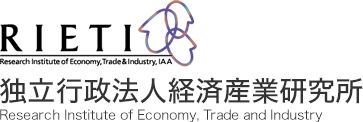| 執筆者 | 党 建偉(同済大学)/元橋 一之(ファカルティフェロー)/赵 秋涵(東京大学) |
|---|---|
| 発行日/NO. | 2025年10月 25-E-097 |
| 研究プロジェクト | デジタルイノベーションモデルに関する研究 |
| ダウンロード/関連リンク |
概要
本論文においては、製薬業界における特許取得済みイノベーションが、特許取得までの情報開示の段階において、株式市場によってどのように評価されているかを検証した。具体的には、上場企業の米国特許を用いて、技術の新規性とインパクトに関するテキストベースの指標を開発し、イベントスタディにおける情報開示段階(関連論文公表時、特許公開時、特許登録時)の市場反応について分析を行った。その結果、新規性指標については、特許に関連する科学論文発表段階で既に市場の反応が大きく、一方でインパクト指標は特許公開時点および登録時点における反応が大きいことが分かった。特許の市場価値は、新規性とその期待インパクトによって構成されると考えられるが、新規性は、査読済みの科学論文公表によって市場はその企業価値に対する効果を織り込み、インパクトは、特許公開または特許登録段階で特許化や市場リスクの減少とともに観察されることとなる。これらの結果は、より厳格な関連論文と特許のマッチング閾値や代替的なインパクト指標に対しても頑健である。本論文によって、株式市場における特許価値をその新規性と期待市場インパクトに分解し、それらが市場に対する情報公開時点によって異なることが明らかになった。
概要(英語)
We examine how financial markets value patented innovation across disclosure stages in the pharmaceutical sector. Using U.S. patents from publicly listed firms, we construct text-based measures of technological novelty and early diffusion impact. Event-study regressions based on KPSS returns reveal that market reactions are already sizable at the stage of scientific publication for patent–paper pairs (PPPs) and are nearly as large at pre-grant publication as at the patent granting stage—challenging the grant-centric view of patent valuation. Stage-specific regressions show a marked shift in valuation logic: novelty is priced early, especially when peer-reviewed science certifies the invention, while impact becomes salient only once technical content and downstream reuse become observable at the patent publication or granting stage. In PPPs, novelty is strongly rewarded in early stages, but impact is not, suggesting that science-linked inventions follow a distinct valuation channel. These patterns are robust to stricter PPP-matching thresholds and alternative impact metrics. Our findings highlight that both when and what gets disclosed jointly shape the financial value of innovation.

